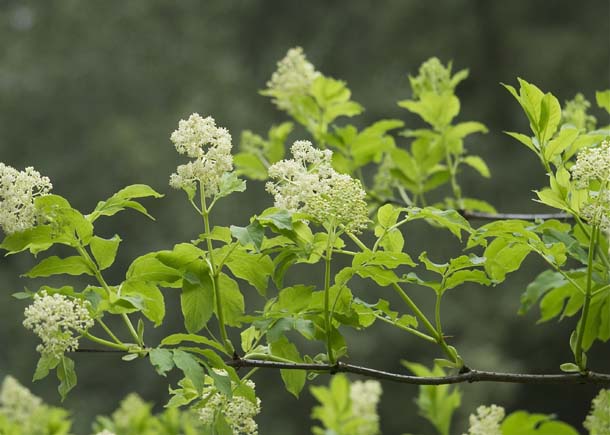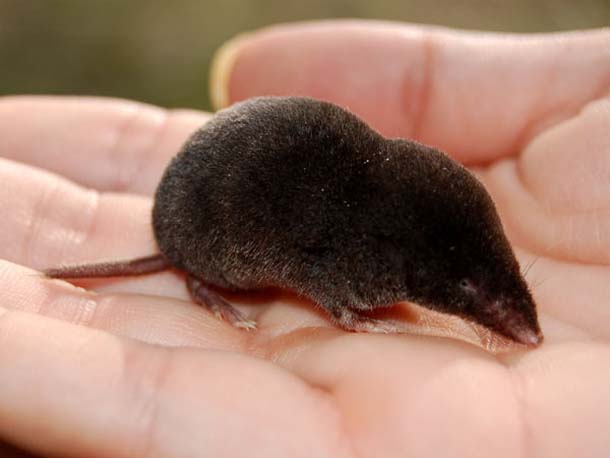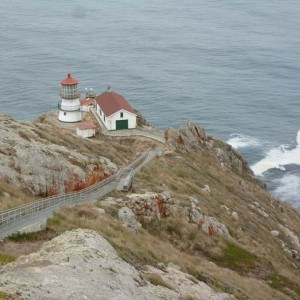Check out this and other hikes Jules has taken on this Google map. The most recent hike is in blue; others are in red.
Conditions: Overcast, light breeze, 55-60°F. March 29, 2012. (4.1 miles)
Trail notes: Easy loop trail beginning at the top of the Limantour Road, to Sky Camp, then looping around Mount Wittenberg, following the Z-Ranch Trail back to the Sky Trail.
Sky Trail starts along the spine of Inverness Ridge where bishop pine forest gives way to Douglas fir. From here north, the soil is well-drained, decomposed granite, a condition that favors the dry-loving (xerophilic) pine. Southward, granitic basement rock is overlain by marine shales that hold more water and favor the more water-loving (hydrophilic) firs.
Although the Mount Vision fire voraciously consumed the dry pine forest, it did not penetrate the damper fir forest.
We set out with several friends who were visiting from the Colorado front range. Their enthusiasm for the moist marine air and the lushness of the vegetation is contagious; we are all enthused by the green luxuriance of the fog zone.
After a dry winter followed by steady spring rains, banana slugs are out and about. Lacking external shells, these mollusks need to stay moist; otherwise their mucus-covered bodies dry out and shrivel up. Banana slugs occur only in damp forests along the Pacific coast from Alaska southward to Santa Cruz, a distribution that conforms to the Pacific coast rainforest. The glue-like mucus that covers the slug’s body has several apparent functions: It is very efficient at absorbing water and it contains an anesthetic that may deter some predators, though not all. Slugs are a favored food of the Pacific giant salamander, and raccoons and rodents seem to relish them as well. (The mucus is difficult to remove from clothing, so if you get some on your jeans, try rinsing with Classic Coke, which makes one wonder what this beverage does to our innards.)
Near Sky Camp, we find a dead shrew-mole in the path. These tiny mammals are rather common on the coastal slope of the peninsula but seldom seen. Little is known about the breeding biology of the shrew-mole, but this individual was probably out looking for love, otherwise he’d be underground, alone in his shallow burrow.
Circling Mount Wittenberg the trail traverses a moist north-facing slope above the steep canyon that drains into Haggerty Gulch and Lagunitas Creek. Red elderberry is in full bloom, a large, shade-loving bush sporting cream-colored inflorescences. A male Allen’s hummingbird is in dramatic aerial display above the bush, and we hear the emphatic, dulcet, descending song of a Wilson’s Warbler, the first of the season. This neotropical migrant has just returned from wintering grounds in Central America, and by mid-April its song will be one of the most common melodies resonating through the conifer forests of the peninsula. Listen here.

-
Red elderberry (Sambucus racemosa). Photograph by Jules Evens.







